The wide grip bent over row is an effective exercise that targets your upper back muscles. This compound exercise also works your shoulders, biceps, and forearms. It's a must-do exercise for anyone looking to build a strong and muscular back.
How to Do a Wide Grip Bent Over Row

To perform a wide grip bent over row, follow these steps:
- Stand with your feet shoulder-width apart and hold a barbell with an overhand grip that's wider than shoulder-width apart.
- Bend at your hips and keep your back straight.
- Lower the barbell towards the ground while keeping your arms extended.
- Pull the barbell towards your upper abdomen while keeping your elbows close to your body.
- Lower the barbell back to the starting position and repeat for the desired number of reps.
Benefits of Wide Grip Bent Over Rows

The wide grip bent over row has many benefits, including:
- Strengthening your upper back muscles
- Improving your posture
- Increasing your pulling strength
- Working your shoulders, biceps, and forearms
- Helping to prevent injuries
Variations of Wide Grip Bent Over Rows

There are several variations of the wide grip bent over row, including:
- Close grip bent over row
- Single arm dumbbell bent over row
- Pendlay row
- T-bar row
Tips for Doing Wide Grip Bent Over Rows

Here are some tips to help you perform wide grip bent over rows correctly:
- Keep your back straight and avoid rounding it.
- Engage your core muscles to stabilize your spine.
- Use a weight that allows you to perform the exercise with proper form.
- Don't jerk the weight up, use a controlled motion.
- Breathe out as you pull the weight towards your upper abdomen and breathe in as you lower it back down.
Incorporating Wide Grip Bent Over Rows into Your Workout Routine

You can incorporate wide grip bent over rows into your back workout routine by doing 3-4 sets of 8-12 reps. You can also superset them with other exercises like pull-ups or lat pulldowns for an even greater back workout.
Conclusion
The wide grip bent over row is a great exercise for building a strong and muscular back. With the right form and technique, you can reap the benefits of this compound exercise and achieve your fitness goals.
Related video of Wide Grip Bent Over Row: A Comprehensive Guide

Introduction
Hip internal rotation is the degree to which the hip joint can rotate inwardly. Limited hip internal rotation is a common problem among people of all ages and can lead to various conditions and injuries, such as hip impingement and lower back pain. Improving hip internal rotation can help to prevent these issues and improve overall mobility and performance.Anatomy of the Hip Joint
Before we discuss how to improve hip internal rotation, it's important to understand the anatomy of the hip joint. The hip joint is a ball-and-socket joint that connects the thigh bone (femur) to the pelvis. The head of the femur fits into a socket in the pelvis, allowing for a wide range of motion.Causes of Limited Hip Internal Rotation
There are several factors that can contribute to limited hip internal rotation, including tight hip muscles, poor posture, and previous injuries. Sitting for extended periods of time can also cause tightness in the hip flexors, which can limit hip internal rotation.Stretching for Hip Internal Rotation
One of the best ways to improve hip internal rotation is through stretching. Here are some effective stretches to try:- Pigeon Pose: Start in a tabletop position and bring one knee forward, placing it behind your hand. Extend your other leg behind you and lower your body down, resting your forehead on your hands. Hold for 30 seconds and then switch sides.
- Figure Four Stretch: Lie on your back with your knees bent and feet flat on the ground. Cross one ankle over the opposite knee and gently pull the knee towards your chest. Hold for 30 seconds and then switch sides.
- Seated Butterfly Stretch: Sit on the ground with the soles of your feet together and your knees out to the sides. Gently press down on your knees with your hands to increase the stretch. Hold for 30 seconds.
Strengthening Exercises for Hip Internal Rotation
In addition to stretching, strengthening exercises can also help to improve hip internal rotation. Here are some exercises to try:
- Clamshells: Lie on your side with your knees bent and your feet together. Keeping your heels together, lift your top knee as high as you can without moving your pelvis. Lower back down and repeat for 10-15 reps on each side.
- Hip Rotations: Lie on your back with your knees bent and feet flat on the ground. Keeping your knees together, rotate your hips to one side as far as you can without lifting your shoulders off the ground. Return to center and repeat on the other side for 10-15 reps.
- Resistance Band Walks: Place a resistance band around your ankles and stand with your feet hip-width apart. Step to one side with one foot, keeping tension on the band. Follow with the other foot, taking 10-15 steps in each direction.
Conclusion
Improving hip internal rotation is important for overall mobility and can help to prevent injuries and conditions such as hip impingement and lower back pain. By incorporating stretching and strengthening exercises into your routine, you can improve your hip internal rotation and enjoy better performance in your daily activities.Related video of Improving Hip Internal Rotation

The med ball push press is an effective exercise that targets the upper body, lower body, and core. This exercise can be performed by anyone, from beginners to advanced athletes, and it requires only a medicine ball. In this article, we will discuss how to perform the med ball push press and its benefits.
How to Perform the Med Ball Push Press

To perform the med ball push press, follow these steps:
- Stand with your feet shoulder-width apart and hold a medicine ball with both hands at chest level.
- Bend your knees and lower your body into a quarter squat position.
- Quickly extend your legs and push the medicine ball overhead, keeping your arms straight.
- Lower the medicine ball back to your chest and repeat for the desired number of reps.
It's important to maintain a tight core and keep your back straight throughout the exercise.
Benefits of the Med Ball Push Press

The med ball push press offers numerous benefits, including:
- Improves upper body strength: The med ball push press targets the shoulders, chest, and triceps, helping to improve upper body strength.
- Develops lower body power: The explosive movement of the med ball push press requires a strong lower body, making it a great exercise for developing lower body power.
- Increases core stability: The med ball push press requires a tight core to maintain proper form, which can help improve core stability.
- Enhances athletic performance: The med ball push press is a functional exercise that mimics many movements in sports, making it a great exercise for enhancing overall athletic performance.
- Burns calories: The med ball push press is a full-body exercise that can help burn calories and improve cardiovascular fitness.
Conclusion
The med ball push press is a versatile exercise that offers numerous benefits for athletes of all levels. By incorporating this exercise into your training routine, you can improve upper body strength, lower body power, core stability, and overall athletic performance. Give the med ball push press a try and see the results for yourself!
Related video of Med Ball Push Press: How to Perform and Benefits

If you're looking to build bigger biceps, then the standing Ez bar curl is a must-have exercise in your routine. This exercise is designed to target the bicep muscles, helping you to achieve the strong and toned arms you've always wanted. In this article, we'll take an in-depth look at the standing Ez bar curl, including its benefits, how to perform it, and some tips to help you get the most out of your workouts.
What Are the Benefits of Standing Ez Bar Curls?
Before we get into the specifics of how to perform a standing Ez bar curl, let's take a moment to discuss the benefits of this exercise. One of the primary benefits of the standing Ez bar curl is that it targets the biceps, helping to increase muscle size and strength. Additionally, this exercise can help to improve grip strength, which can be beneficial in other exercises.
Another great benefit of the standing Ez bar curl is that it can be a great addition to any workout routine. Whether you're a beginner or an experienced lifter, this exercise can help you to achieve your fitness goals.
How to Perform a Standing Ez Bar Curl

Now that you know the benefits of standing Ez bar curls, let's take a look at how to perform this exercise. Follow these steps to get started:
- Begin by standing with your feet shoulder-width apart and your knees slightly bent.
- Grasp the Ez bar with an underhand grip and your hands shoulder-width apart.
- Keeping your elbows close to your body, lift the bar towards your chest.
- Slowly lower the bar back down to the starting position.
- Repeat for the desired number of reps.
When performing a standing Ez bar curl, it's important to maintain good form. Keep your elbows close to your body throughout the exercise, and avoid swinging the bar or using momentum to lift it. This will help to ensure that you're targeting the bicep muscles and getting the most out of your workout.
Tips for Getting the Most Out of Your Workouts

If you want to get the most out of your standing Ez bar curl workouts, here are a few tips to keep in mind:
- Start with a lighter weight and gradually increase as you become stronger.
- Focus on good form and avoid using momentum to lift the bar.
- Incorporate other bicep exercises into your routine for a well-rounded workout.
- Rest for at least 48 hours between bicep workouts to allow your muscles to recover.
By following these tips, you can ensure that you're getting the most out of your standing Ez bar curl workouts and achieving your fitness goals.
Conclusion
The standing Ez bar curl is a great exercise for building bigger biceps and improving grip strength. By following the steps outlined in this article and incorporating these tips into your workout routine, you can get the most out of this exercise and achieve the strong and toned arms you've always wanted.
Related video of Standing Ez Bar Curl: The Ultimate Guide to Building Biceps
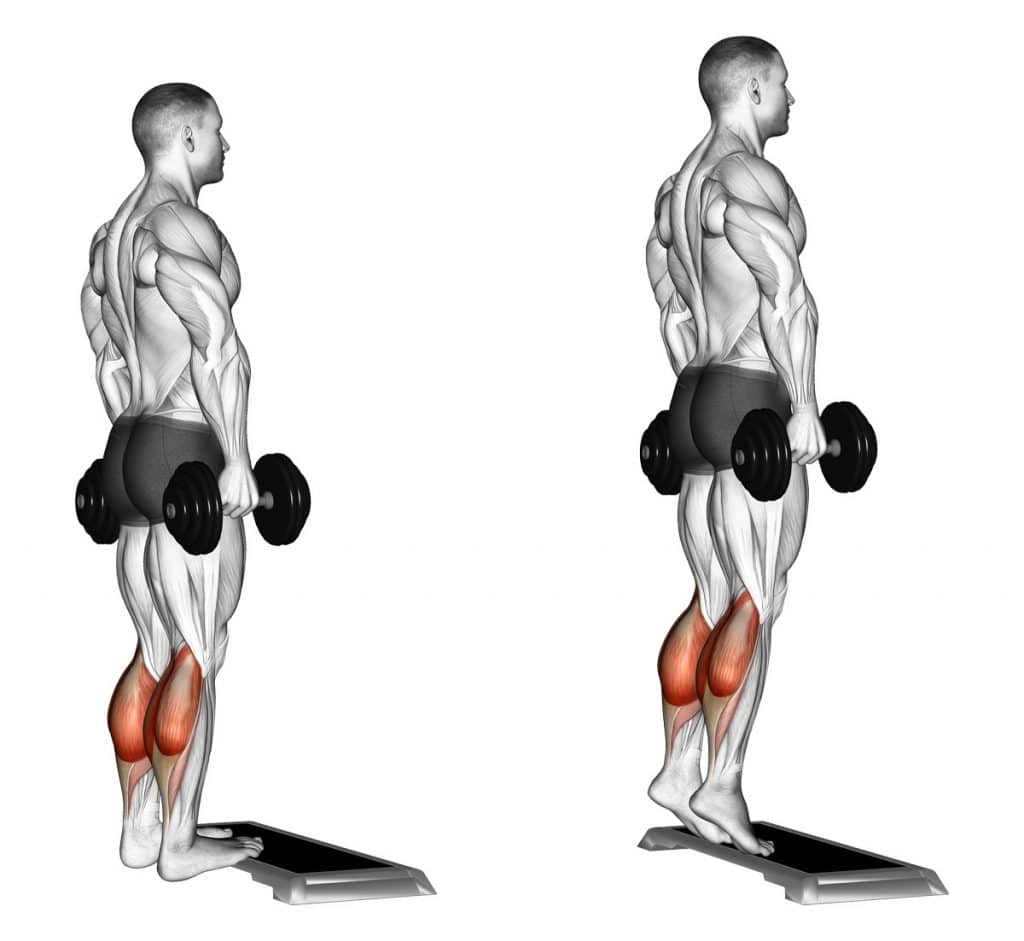
The Db Standing Calf Raise is an incredibly effective exercise for strengthening and toning the calf muscles. It is a simple exercise that can be done at the gym or at home with just a set of dumbbells. In this article, we will take a closer look at the benefits of the Db Standing Calf Raise, how to perform it correctly, and some tips to help you get the most out of your calf workout.
Benefits of the Db Standing Calf Raise
The Db Standing Calf Raise targets the gastrocnemius and soleus muscles in the calves, which are responsible for plantar flexion or the ability to point the toes. By strengthening these muscles, you can improve your balance, stability, and overall athleticism. Additionally, toned calves can also enhance the appearance of your legs, making them look leaner and more defined.
How to Perform the Db Standing Calf Raise
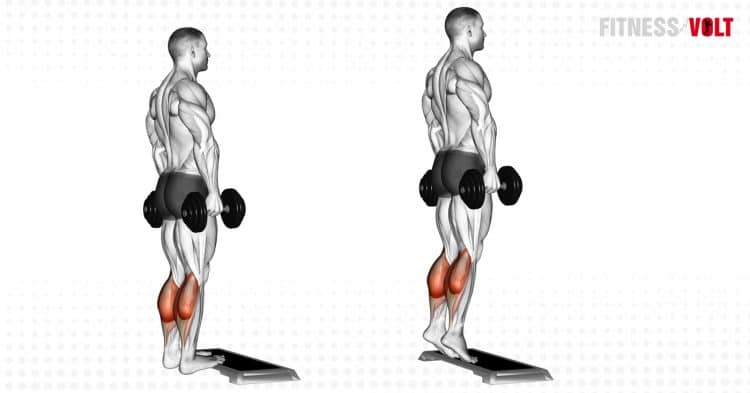
To perform the Db Standing Calf Raise, follow these simple steps:
- Stand with your feet shoulder-width apart and hold a dumbbell in each hand.
- Place the balls of your feet on a raised surface such as a step or weight plate.
- Slowly raise your heels as high as you can, then lower them back down to the starting position.
- Repeat for the desired number of reps.
It's important to keep your core engaged and your back straight throughout the exercise. You should also avoid bouncing at the bottom of the movement and instead, pause briefly before lifting your heels back up.
Tips for Getting the Most Out of Your Calf Workout

If you want to maximize the benefits of the Db Standing Calf Raise, try incorporating these tips into your calf workout:
- Vary your foot placement by turning your toes inward or outward for different angles of activation.
- Use a weight that is challenging but still allows you to maintain proper form.
- Perform calf stretches before and after your workout to prevent injury and improve flexibility.
- Incorporate other calf exercises such as seated calf raises and calf raises on a leg press machine for a well-rounded workout.
Conclusion
The Db Standing Calf Raise is a simple yet effective exercise that can help you strengthen and tone your calf muscles. By incorporating this exercise into your workout routine and following the tips outlined above, you can achieve stronger, leaner, and more defined calves in no time.
Related video of Db Standing Calf Raise: The Ultimate Guide
If you're looking for a full-body workout that burns fat and helps you build strength, look no further than the swing exercise with dumbbell. This exercise is a great way to work your entire body, from your legs and glutes to your arms and shoulders. In this article, we'll take a closer look at this exercise and how you can incorporate it into your routine for maximum results.
What is the Swing Exercise With Dumbbell?

The swing exercise with dumbbell is a compound exercise that works multiple muscle groups at once. It involves swinging a dumbbell between your legs and up to chest height while keeping your back straight and your core engaged. This exercise is based on the traditional kettlebell swing, but with the added resistance of a dumbbell.
Benefits of the Swing Exercise With Dumbbell

There are many benefits to incorporating the swing exercise with dumbbell into your workout routine. Here are just a few:
- It works multiple muscle groups at once, making it a great full-body workout.
- It helps improve your cardiovascular endurance.
- It can help improve your posture and balance.
- It's a great way to burn fat and build lean muscle mass.
How to Do the Swing Exercise With Dumbbell

Here are the steps to perform the swing exercise with dumbbell:
- Stand with your feet shoulder-width apart and hold a dumbbell with both hands in front of your body.
- Lower the dumbbell between your legs, keeping your back straight and your core engaged.
- Drive through your heels and swing the dumbbell up to chest height, keeping your arms straight.
- Lower the dumbbell back down between your legs and repeat for the desired number of reps.
It's important to keep your back straight and your core engaged throughout the exercise to avoid injury and get the most out of the movement.
Variations of the Swing Exercise With Dumbbell
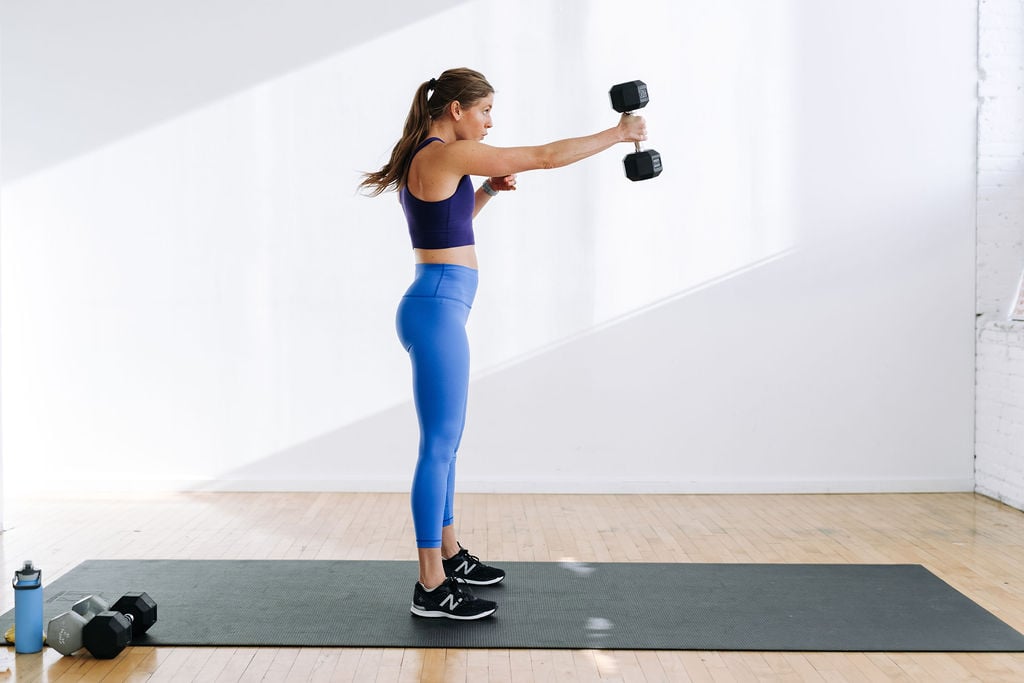
There are a few variations of the swing exercise with dumbbell that you can try to mix up your workout routine:
- Single-arm swing: Perform the exercise with one arm at a time, switching arms between reps.
- Sumo swing: Take a wider stance and hold the dumbbell with both hands between your legs for a different variation.
- Jumping swing: Add a jump at the top of the movement for an extra challenge.
How to Incorporate the Swing Exercise With Dumbbell into Your Workout Routine
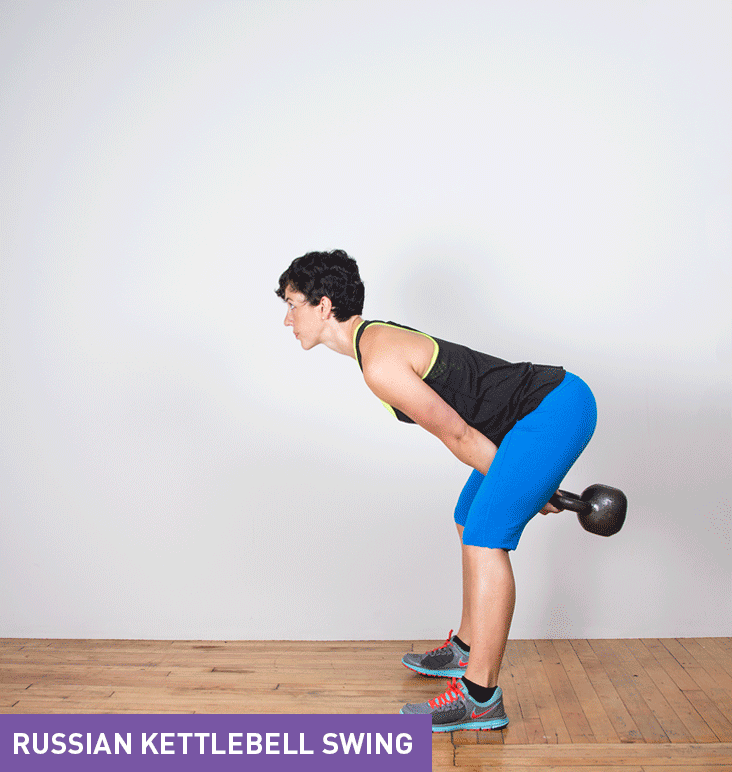
The swing exercise with dumbbell can be incorporated into your workout routine in a few different ways:
- As a standalone exercise: Perform 3-4 sets of 12-15 reps as part of your full-body workout.
- As part of a circuit: Incorporate the swing exercise with dumbbell into a circuit with other exercises for a full-body workout.
- As part of a HIIT workout: Perform the swing exercise with dumbbell for 30 seconds, followed by 30 seconds of rest, for a high-intensity interval workout.
Tips for Performing the Swing Exercise With Dumbbell
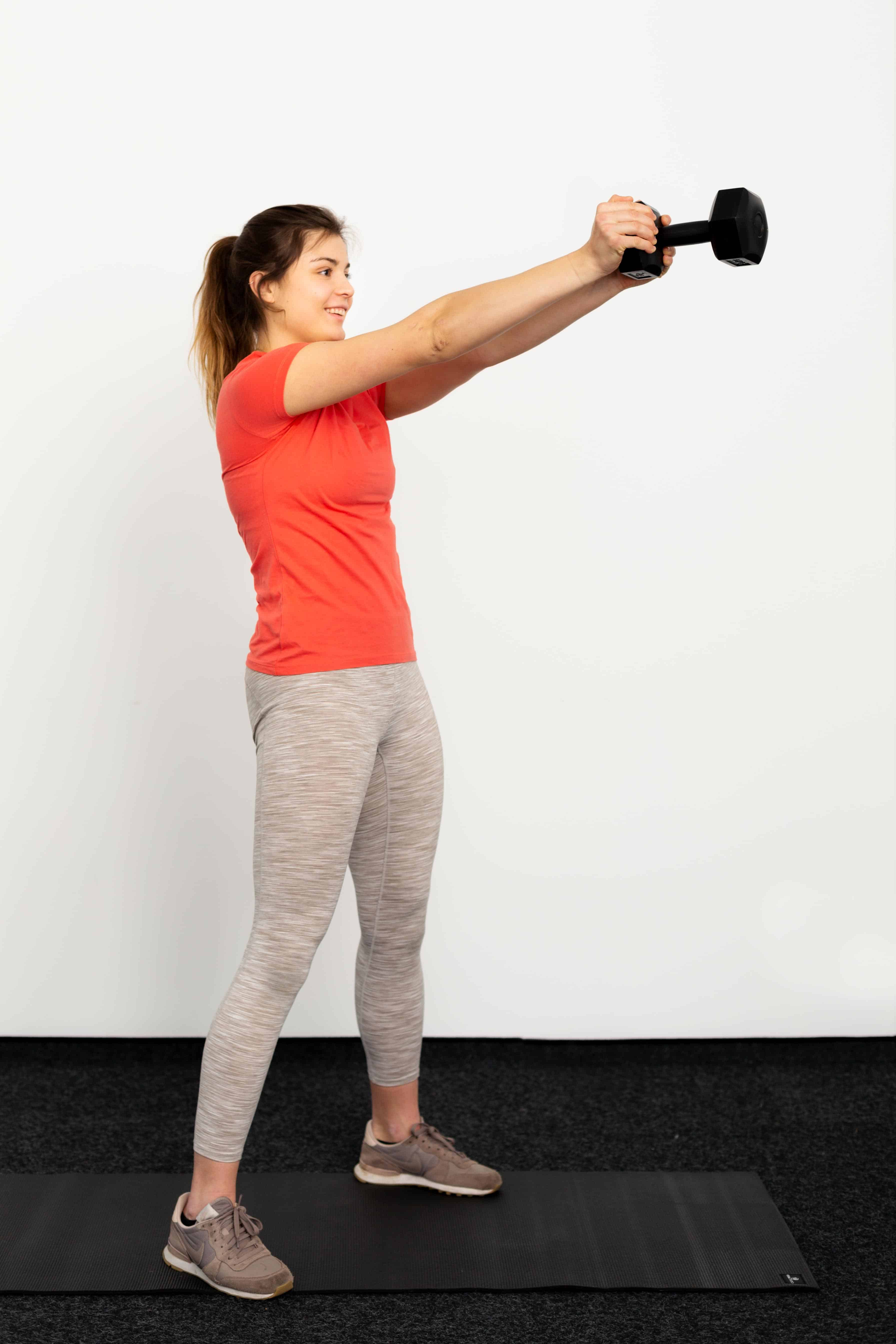
Here are a few tips to keep in mind when performing the swing exercise with dumbbell:
- Start with a lighter weight and focus on form before increasing the weight.
- Keep your core engaged throughout the movement to avoid injury and get the most out of the exercise.
- Don't use your back to lift the weight - focus on using your legs and glutes instead.
- Breathe in as you lower the weight and exhale as you swing it up.
Conclusion
The swing exercise with dumbbell is a great full-body workout that can help you burn fat and build lean muscle mass. Incorporate it into your workout routine for maximum results and mix it up with different variations to keep things interesting.
Related video of Swing Exercise With Dumbbell: A Full-Body Workout That Burns Fat

The incline chest barbell press is an excellent exercise for building the upper chest muscles. This exercise targets the clavicular head of the pectoralis major muscle, which is responsible for the bulk of the upper chest. The incline chest barbell press is a compound exercise that not only targets the chest but also works the shoulders and triceps.
How to Perform the Incline Chest Barbell Press

To perform the incline chest barbell press, follow these steps:
- Set the incline bench to 30-45 degrees.
- Lie down on the bench with your feet firmly planted on the ground.
- Grasp the barbell with an overhand grip, hands shoulder-width apart.
- Unrack the barbell and lower it to your chest, keeping your elbows tucked in.
- Push the barbell back up to the starting position, exhaling as you go.
- Repeat for the desired number of reps.
Variations of the Incline Chest Barbell Press
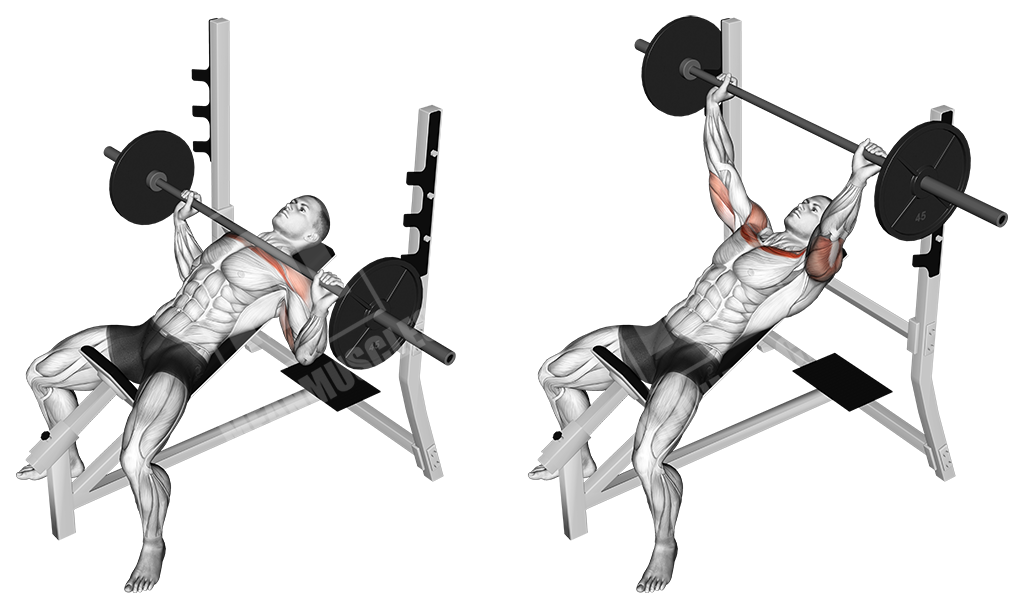
There are several variations of the incline chest barbell press that you can try to target different areas of the chest and add variety to your workout:
- Incline dumbbell press
- Reverse grip incline bench press
- Close-grip incline bench press
- Low-incline bench press
Tips for Performing the Incline Chest Barbell Press

To get the most out of the incline chest barbell press, follow these tips:
- Use a weight that allows you to perform the exercise with proper form.
- Keep your elbows tucked in to target the upper chest.
- Exhale as you push the barbell up.
- Don't lock out your elbows at the top of the movement.
- Focus on squeezing your chest muscles at the top of the movement.
Benefits of the Incline Chest Barbell Press

The incline chest barbell press offers several benefits:
- Targets the upper chest muscles.
- Works the shoulders and triceps as well.
- Helps build overall chest size and strength.
- Can be performed with a barbell or dumbbells.
Conclusion
The incline chest barbell press is a great exercise for building the upper chest muscles. By following the proper form and technique, you can target the clavicular head of the pectoralis major muscle and add size and strength to your chest. Don't forget to incorporate variations of the exercise and follow the tips for maximum results.
Related video of Incline Chest Barbell Press

The 1 arm cable row is an effective exercise that targets the back muscles. It is a variation of the traditional cable row exercise, which is performed using both arms. This exercise is perfect for those who want to focus on one side of their back at a time or for those who want to add some variety to their back workout routine.
How to Perform the 1 Arm Cable Row

To perform the 1 arm cable row, follow these steps:
- Start by attaching a single handle to a low pulley cable machine.
- Stand facing the machine with your feet shoulder-width apart and your knees slightly bent.
- Grab the handle with one hand and extend your arm out in front of you.
- Keep your back straight and your core engaged.
- Pull the handle towards your chest, keeping your elbow close to your body.
- Squeeze your back muscles and hold for a second.
- Slowly release the handle back to the starting position.
- Repeat for the desired number of reps.
- Switch sides and repeat the exercise with your other arm.
Benefits of the 1 Arm Cable Row
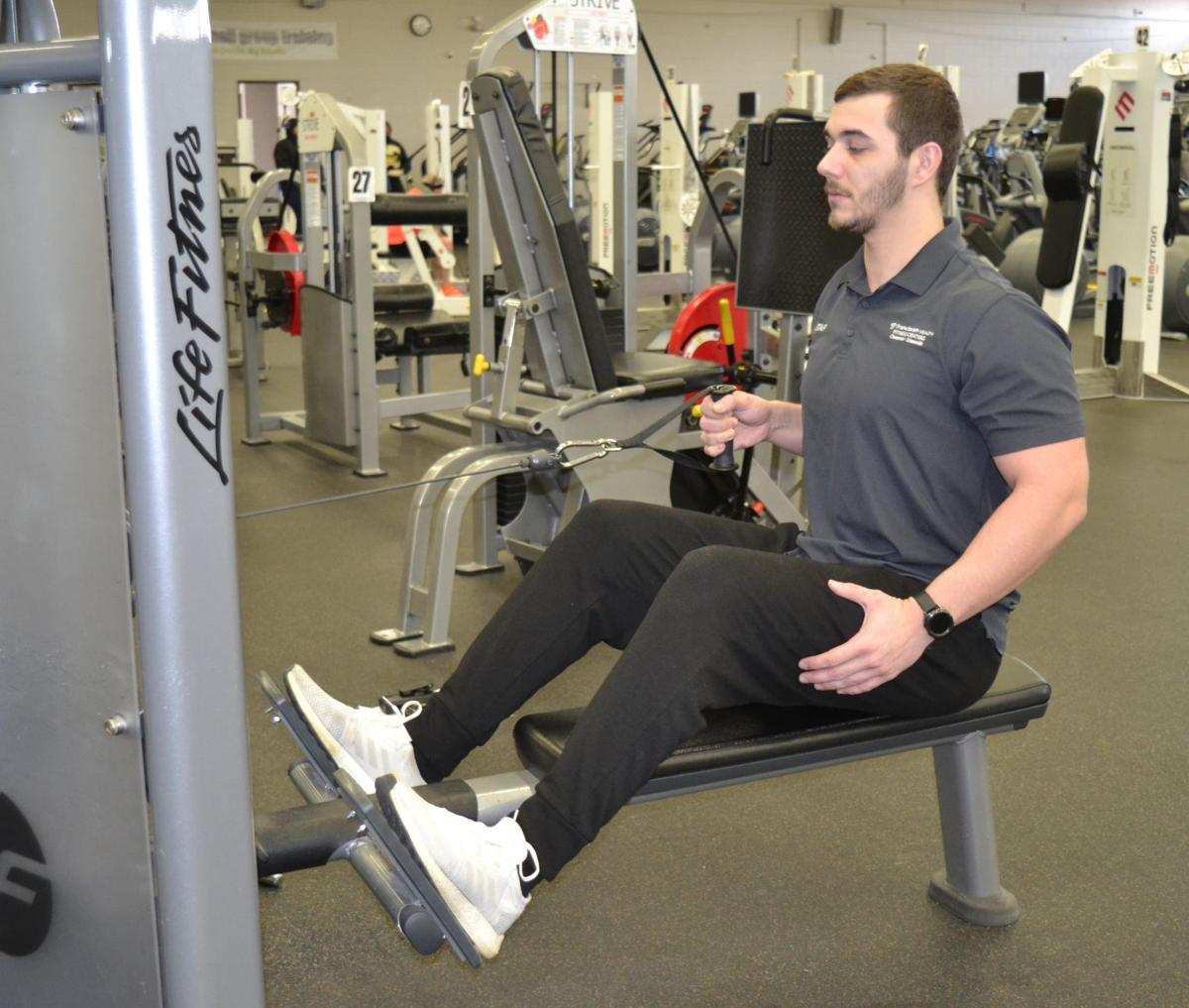
The 1 arm cable row has several benefits, including:
- Targeting the back muscles more effectively as you can focus on one side at a time.
- Improving your posture by strengthening the muscles in your upper back.
- Increasing your pulling strength, which can help with other exercises such as pull-ups and chin-ups.
- Adding variety to your back workout routine.
Variations of the 1 Arm Cable Row

There are several variations of the 1 arm cable row that you can try to target different areas of your back. Some of these variations include:
- Performing the exercise while kneeling on a bench.
- Performing the exercise while standing on one leg.
- Performing the exercise with a resistance band instead of a cable machine.
- Performing the exercise with a wider or narrower grip on the handle.
Tips for Performing the 1 Arm Cable Row

Here are some tips to help you perform the 1 arm cable row correctly:
- Keep your core engaged throughout the exercise to maintain good posture.
- Focus on squeezing your back muscles as you pull the handle towards your chest.
- Avoid using momentum to pull the weight. Instead, use controlled movements.
- Start with a lighter weight to perfect your form before increasing the weight.
Conclusion
The 1 arm cable row is a great exercise for targeting the back muscles and improving your posture. It is a simple exercise that can be modified to target different areas of your back. By following the correct form and incorporating this exercise into your workout routine, you can achieve a stronger and more defined back.
Related video of 1 Arm Cable Row
When it comes to chest workouts, people often think of traditional bench press, push-ups, and dumbbell flyes. However, there is one exercise that can help you target your chest muscles more effectively - the cable chest workout one arm. This exercise is great for isolating the chest muscles and building strength and definition.

What is Cable Chest Workout One Arm?
The cable chest workout one arm is a unilateral exercise that targets the chest muscles. It involves using a cable machine with a single handle attachment. You stand facing the cable machine and grab the handle with one hand. Then, you pull the handle towards your chest while keeping your elbow close to your body. This motion mimics the movement of a traditional dumbbell flye, but with added resistance from the cable machine.
Benefits of Cable Chest Workout One Arm
The cable chest workout one arm has several benefits over other chest exercises. Firstly, it allows you to isolate each side of your chest individually, which helps to correct any muscle imbalances. Secondly, the constant tension from the cable machine provides a smoother range of motion, making it easier to maintain good form. Finally, the cable chest workout one arm places less stress on your shoulders and wrists compared to other chest exercises, making it a safer option for those with joint issues.

How to Perform Cable Chest Workout One Arm
Before performing the cable chest workout one arm, make sure you have set up the cable machine correctly. Adjust the weight and handle height to your desired level, and ensure that the cable is running smoothly. Once you are ready, follow these steps:
- Stand facing the cable machine with your feet shoulder-width apart.
- Grab the handle with one hand and bring it towards your chest, keeping your elbow close to your body. Your other hand should be placed on your hip for balance.
- Hold the handle at the peak of the contraction for a few seconds, then slowly release it back to the starting position.
- Complete 3 sets of 12-15 reps on each side.

Variations of Cable Chest Workout One Arm
If you want to challenge yourself further, there are several variations of cable chest workout one arm that you can try. These include:
- Cable Chest Flye - Instead of pulling the handle towards your chest, bring it outwards to your sides while keeping your arms straight.
- Cable Chest Press - Stand facing away from the cable machine and grab the handle with one hand. Push the handle forward until your arm is fully extended, then slowly release it back to the starting position.
- Cable Crossover - Stand in the center of the cable machine with a handle in each hand. Bring both handles towards your chest while keeping your elbows slightly bent.

Conclusion
The cable chest workout one arm is an effective exercise for building strength and definition in your chest muscles. By incorporating this exercise into your workout routine, you can achieve a more balanced and sculpted chest. Remember to start with light weights and gradually increase the resistance as you become more comfortable with the exercise.
Related video of Cable Chest Workout One Arm

Introduction
Plank to push up is an exercise that targets your core, shoulders, and triceps. It's a great way to build strength and improve your overall fitness level. It's also a versatile exercise that you can do anywhere, anytime, without any equipment. In this article, we'll show you how to do the plank to push up exercise correctly and safely.
How to Do a Plank to Push Up
The plank to push up exercise is a combination of two exercises: the plank and the push up. Here's how to do it:
- Start in a plank position with your elbows on the ground and your body straight.
- Push yourself up one arm at a time into a push up position.
- Lower yourself back down into a plank position one arm at a time.
- Repeat the movement for a set number of reps or time.

Tips for Doing a Plank to Push Up
Here are some tips to help you do a plank to push up exercise correctly:
- Keep your core tight and your body straight throughout the exercise.
- Don't let your hips sag or stick up in the air.
- Engage your shoulder blades and keep them away from your ears.
- Breathe in as you lower yourself down and breathe out as you push yourself up.
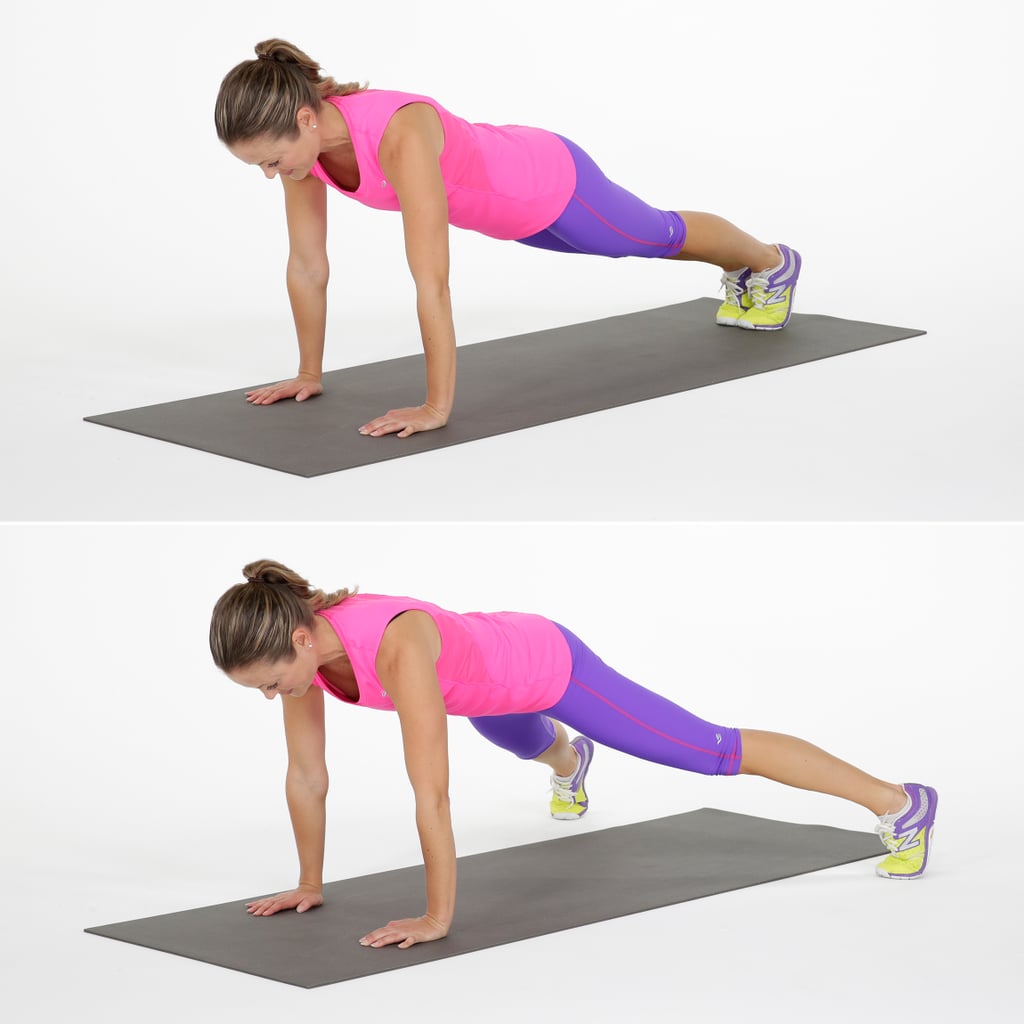
Variations of Plank to Push Up
Here are some variations of the plank to push up exercise:
- Beginner: Do the exercise on your knees instead of your toes.
- Intermediate: Do the exercise with a clap at the top of the push up.
- Advanced: Do the exercise with a jump at the top of the push up.
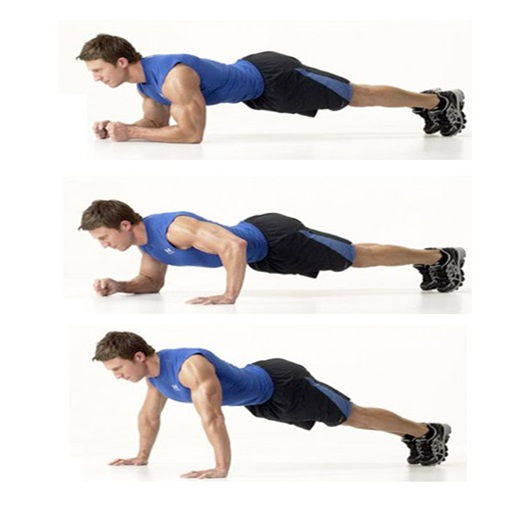
The Benefits of Plank to Push Up
Here are some of the benefits of doing plank to push up exercise:
- Strengthens your core, shoulders, and triceps.
- Improves your overall fitness level.
- Increases your metabolism and burns calories.
- Enhances your posture and stability.
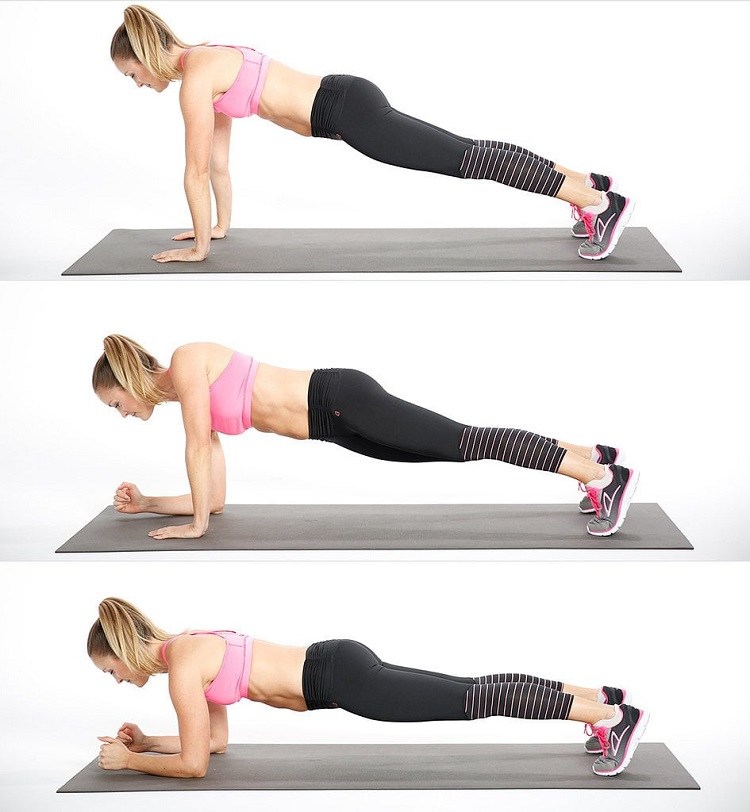
Precautions and Contraindications
Here are some precautions and contraindications for doing the plank to push up exercise:
- Avoid this exercise if you have any shoulder, wrist, or lower back injuries.
- Don't do this exercise if you're pregnant.
- Consult your doctor before starting this exercise if you have any medical conditions.
- Start with the beginner variation and gradually increase the difficulty level.
Conclusion
Plank to push up is an effective and efficient exercise that can be done anywhere, anytime, without any equipment. It's a great way to build strength, improve your fitness level, and enhance your posture and stability. Just remember to do it correctly and safely, and start with the beginner variation if you're new to this exercise. Happy planking and pushing up!
Related video of Plank to Push Up: A Complete Guide

Are you looking for an effective way to strengthen your lower body muscles? If so, you might want to try doing squats with resistance bands. This workout is not only great for building your leg muscles, but it can also improve your balance, posture, and overall fitness.
What are Resistance Bands?

Resistance bands are elastic bands that come in various sizes and strengths. They are often used in strength training, physical therapy, and rehabilitation exercises. Resistance bands are lightweight, portable, and easy to use, making them a popular workout tool for many people.
What are Squats?
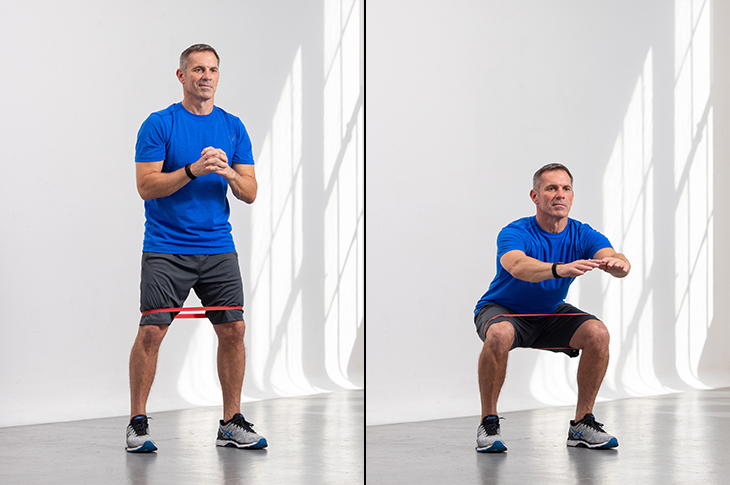
Squats are a type of exercise that targets your leg muscles, especially your quadriceps, hamstrings, and glutes. They are also known as a compound exercise because they involve multiple joints and muscles. Squats are a functional movement that mimics activities like bending, lifting, and standing up from a seated position.
How to Do Squats With Resistance Bands
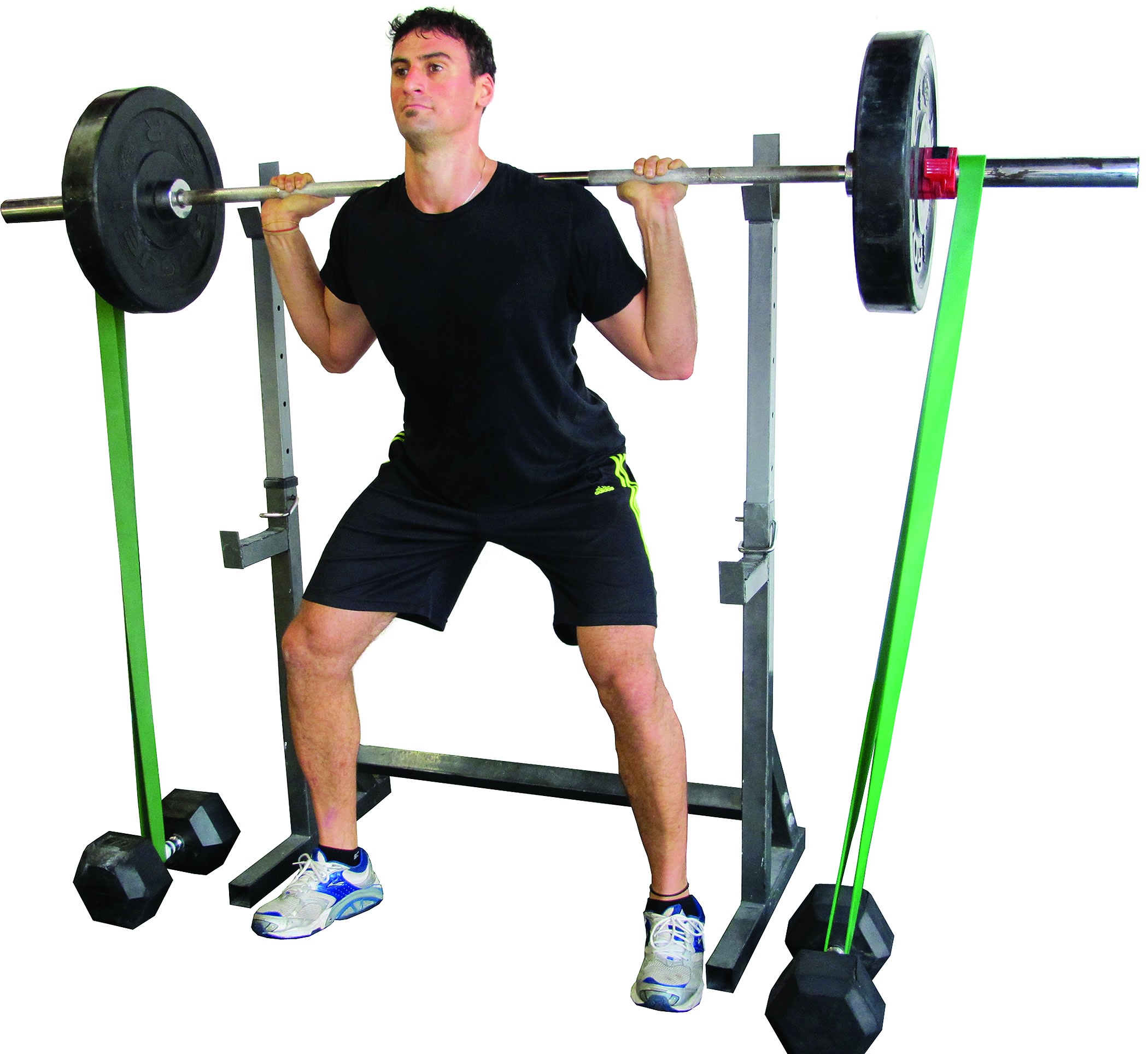
Here are the steps to do squats with resistance bands:
- Stand on the resistance band with your feet shoulder-width apart. Hold the handles of the band with your palms facing inward.
- Bring the band up to your shoulders and keep your elbows close to your body.
- Lower your body by bending your knees and hips while keeping your back straight.
- Pause for a moment, then push through your heels and return to the starting position.
- Repeat for the desired number of repetitions.
It's important to maintain proper form when doing squats with resistance bands. Keep your knees in line with your toes, don't let your knees collapse inward, and don't let your back round or arch.
Variations of Squats With Resistance Bands

Here are some variations of squats with resistance bands that you can try:
- Sumo squats: Stand with your feet wider than shoulder-width apart and your toes pointing outwards. Hold the band with your hands at your chest and perform a squat.
- Jump squats: Perform a regular squat, but jump up explosively when you return to the starting position.
- Bulgarian split squats: Place one foot on the resistance band behind you and hold the handles at your shoulders. Lower your body by bending your front knee and hip.
The Benefits of Squats With Resistance Bands
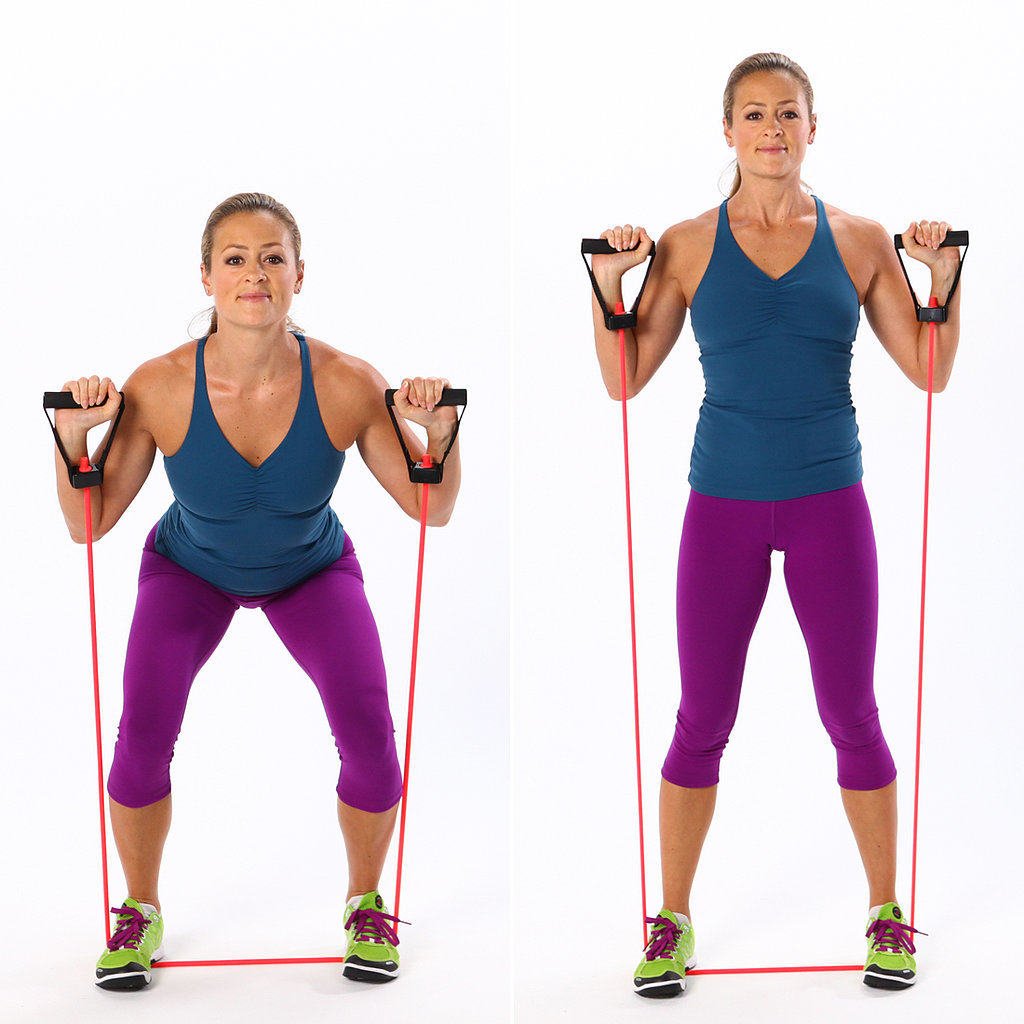
Squats with resistance bands offer several benefits, including:
- Build leg muscles: Squats with resistance bands target your quadriceps, hamstrings, and glutes, which are the largest muscles in your body.
- Improve balance: The resistance from the bands challenges your balance and stability, which can improve your overall balance and coordination.
- Enhance posture: Squats with resistance bands can improve your posture by strengthening your back and core muscles.
- Burn calories: Squats are a high-intensity exercise that can burn a significant amount of calories in a short amount of time.
- Boost overall fitness: Squats with resistance bands can improve your overall fitness by increasing your strength, endurance, and cardiovascular health.
Conclusion
Squats with resistance bands are a simple yet effective way to strengthen your lower body muscles and improve your overall fitness. With proper form and technique, you can perform this workout anywhere, anytime, using only a resistance band. So why not give it a try and see the results for yourself?
Related video of Squats With Resistance Bands: A Comprehensive Guide
ads
Search This Blog
Blog Archive
- December 2022 (19)
- November 2022 (29)
- October 2022 (32)
- September 2022 (29)
- August 2022 (32)
- July 2022 (30)
- June 2022 (31)
- May 2022 (30)
- April 2022 (31)
- March 2022 (12)
About Me
